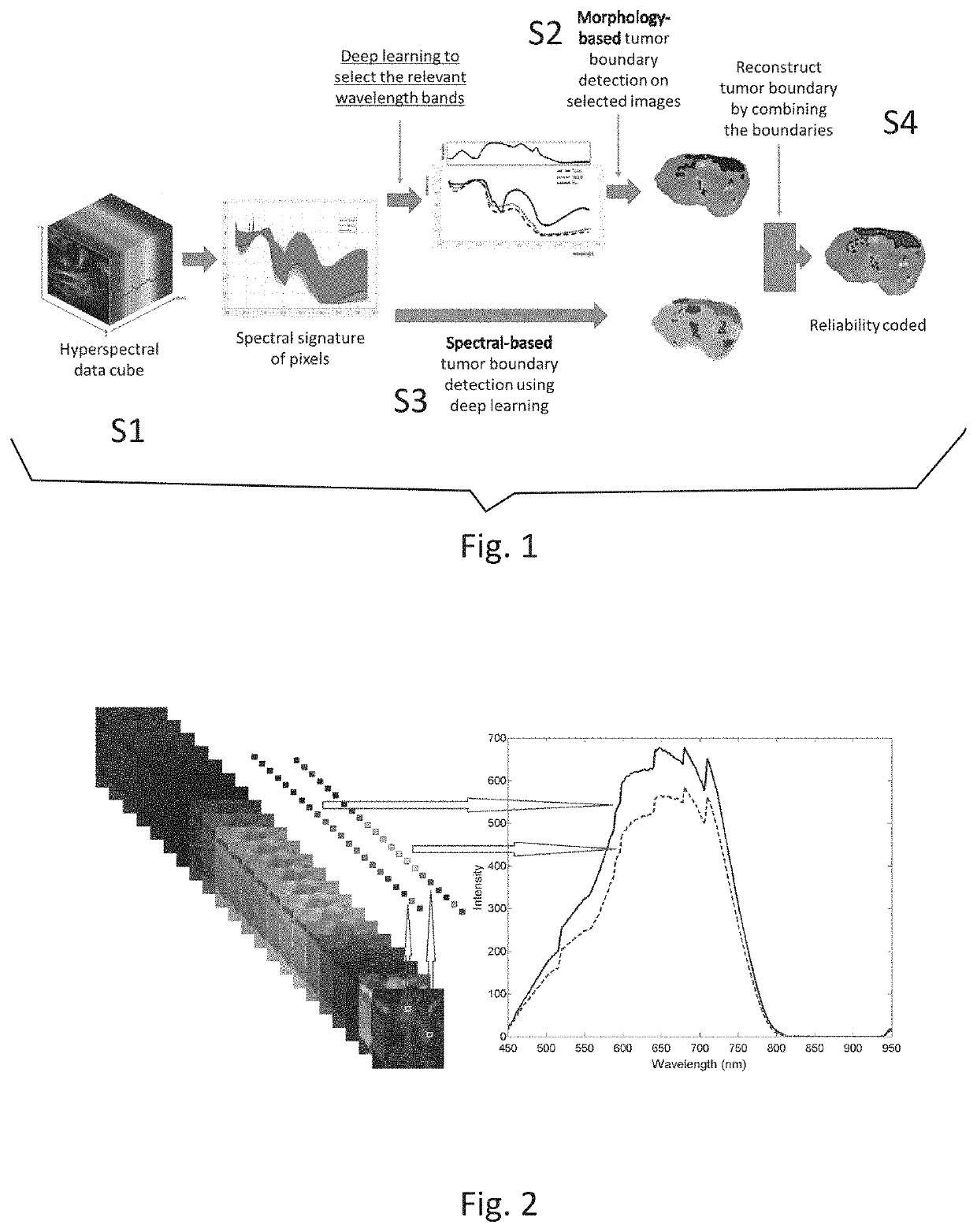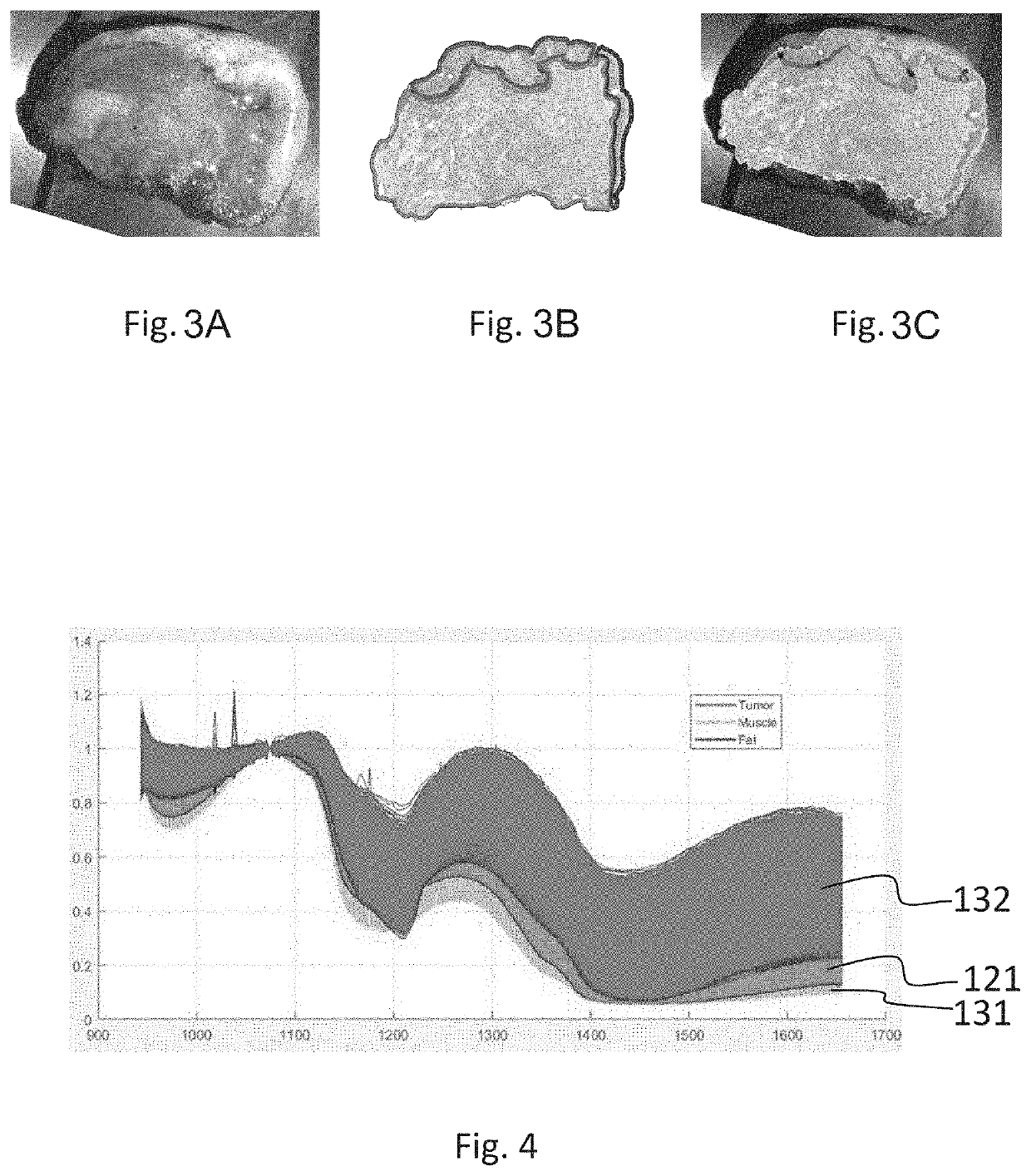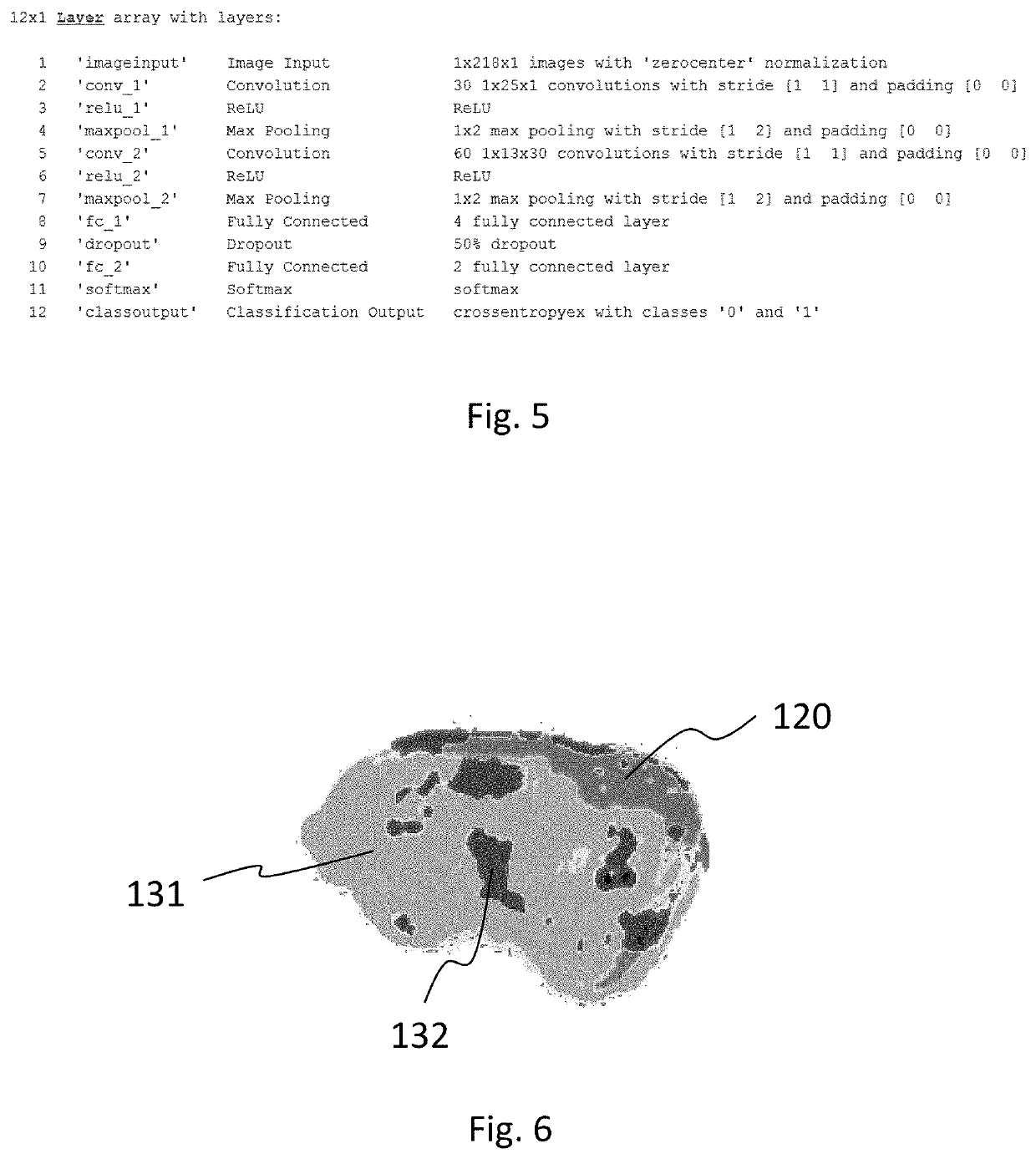Tumor boundary reconstruction using hyperspectral imaging
a hyperspectral imaging and tumor technology, applied in the field of tumor boundary reconstruction using hyperspectral imaging, can solve the problems of increasing the effectiveness of the procedure, challenging the removal of the complete tumor, and no reliable way to provide real-time feedback to the surgeon
- Summary
- Abstract
- Description
- Claims
- Application Information
AI Technical Summary
Benefits of technology
Problems solved by technology
Method used
Image
Examples
Embodiment Construction
[0077]FIG. 1 shows a block diagram of a computer implemented method of determining a boundary of a tumor according to an exemplary embodiment of the present invention. Starting with receiving (S1) a hyperspectral data cube of a tissue sample, which includes the spectral signature of each pixel of the image, a two-fold approach is performed: On the one hand, relevant wavelength bands are selected, preferably by deep learning or a neural network. The image in the respective wavelength band is analysed in a morphological approach (S2) thereby generating a morphological tumor boundary. On the other hand, the spectral information of each pixel or a group of neighbouring pixels is analysed in a spectral approach (S3). Preferably, an AI module or deep learning, as described herein in detail, is used to classify the pixel or the group of neighbouring pixels in tumorous or healthy tissue, thereby generating a spectral tumor boundary. By combining (S4) the morphological tumor boundary and the...
PUM
 Login to View More
Login to View More Abstract
Description
Claims
Application Information
 Login to View More
Login to View More - R&D
- Intellectual Property
- Life Sciences
- Materials
- Tech Scout
- Unparalleled Data Quality
- Higher Quality Content
- 60% Fewer Hallucinations
Browse by: Latest US Patents, China's latest patents, Technical Efficacy Thesaurus, Application Domain, Technology Topic, Popular Technical Reports.
© 2025 PatSnap. All rights reserved.Legal|Privacy policy|Modern Slavery Act Transparency Statement|Sitemap|About US| Contact US: help@patsnap.com



